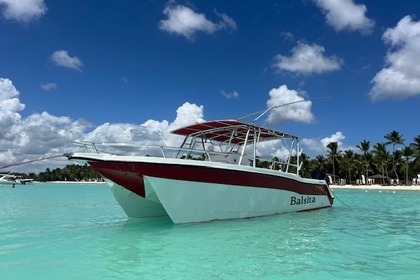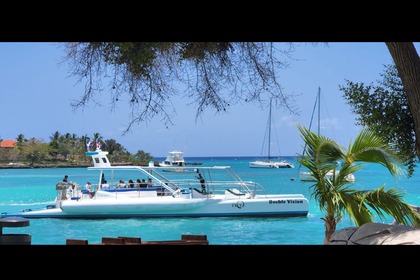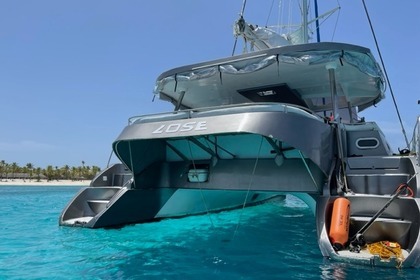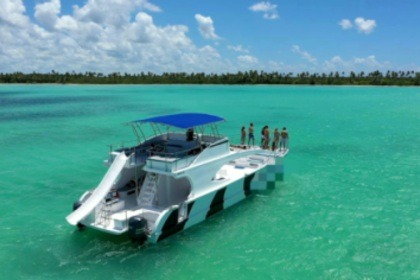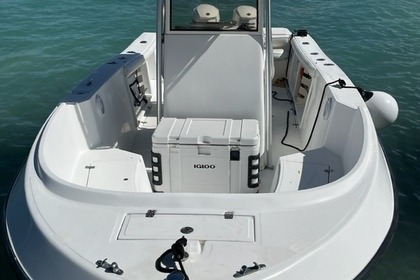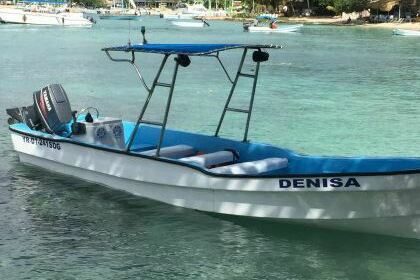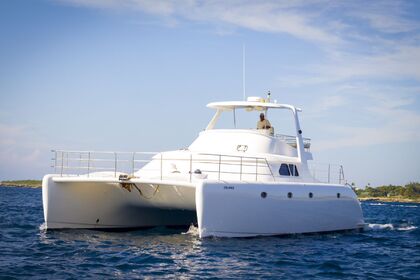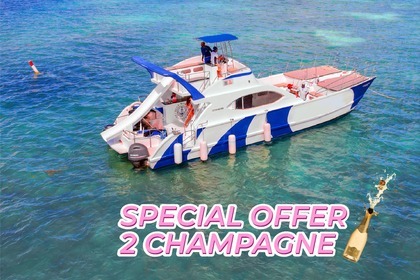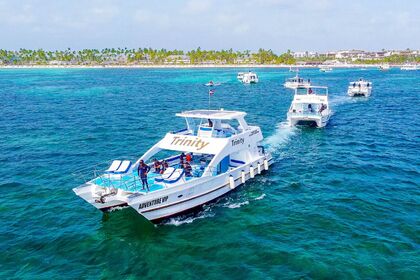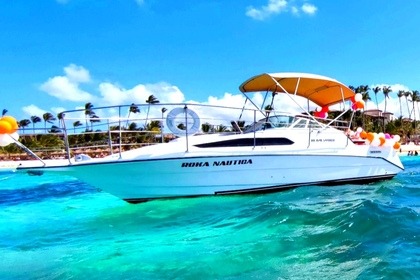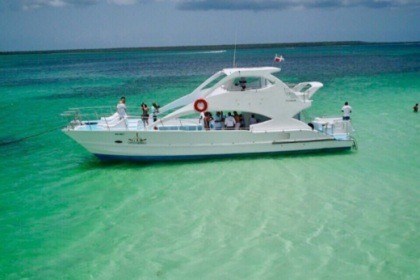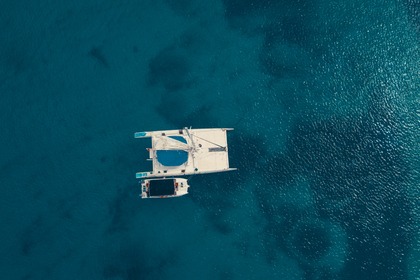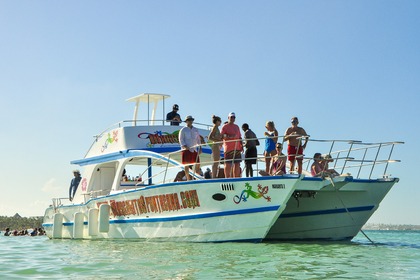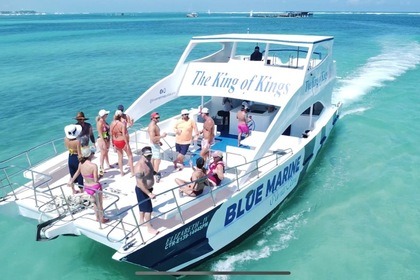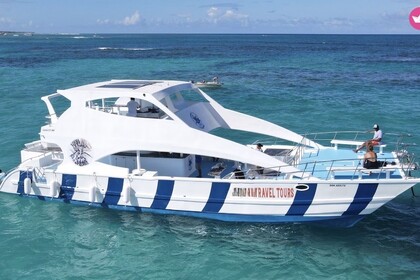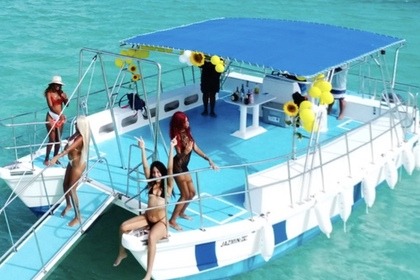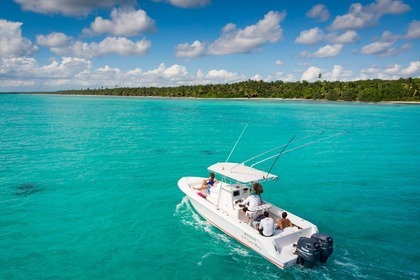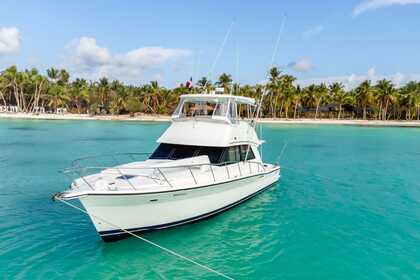Rent a boat in Dominican Republic
Bayahibe
power catamaran - CATAMARAN 30 | 12 people (2022)
From $1,087 / day
Bayahibe
power cat 50 - cat50 | 46 people (2015)
From $1,945 / day
La Romana
Fountaine Pajot - LAGOON | 20 people (2020)
From $4,005 / day
Punta Cana
VIP 2 Levels Power Cruise!! Snorkel-Party Cruise-S - Catamaran | 80 people (2017)
From $16 / day
Bayahibe
MAKO - MAKO 26 CENTER CONSOLE | 6 people (2008)
From $1,133 / day
Bayahibe
Yamaha - 23 | 6 people (2010)
From $401 / day
La Romana
Power Cat Marine - 48 | 22 people (2001)
From $2,947 / day
Punta Cana
VIP 2 LEVELS POWER CRUISE!! SNORKEL-PARTY/CRUISES - CATAMARAN | 50 people (2017)
From $24 / day
Punta Cana
Pacific Craft - volvo | 110 people (2022)
From $2,975 / day
Bávaro
Snorkeling and Pool natural - Yacht tour | 6 people (2000)
From $114 / day
Bayahibe
Cat - Cat | 60 people (2017)
From $7 / day
Saona Island
cat - 2112 | 50 people (2019)
From $7 / day
Punta Cana
MARGARITA - CATAMARAN | 1 person (2015)
From $9 / day
Punta Cana
Private - Yacht | 100 people (2024)
From $629 / day
Punta Cana
5-STAR LUXURY YACHT - CREW AND CAPTAIN INCLUDED | 80 people (2024)
From $443 / day
Bávaro
Motor Catamaran - Sport 2025 | 15 people (2025)
From $298 / day
Bayahibe
CONTENDER 28 CENTER CONSOLE - CONTENDER 28 | 7 people (2007)
From $772 / day
Bayahibe
Riviera - Riviera 49 | 15 people (2002)
From $2,746 / day
- 1
- 2
- 3
- 4
- ...
Boats Reviews
Boat Rental in the Dominican Republic
How much does a Dominican Republic boat charter cost?
Is it possible to rent a boat in the Dominican Republic with or without a skipper?
What to do during your Dominican Republic boat rental?
What are the weather and sailing conditions like in the Dominican Republic?
When is the best time to rent a boat in the Dominican Republic?
What are the most popular ports and sailing areas in the Dominican Republic?
How can I get to the Dominican Republic?
How much does a Dominican Republic boat charter cost?
If you’re considering renting a boat in the Dominican Republic, the price will differ depending on the time of year, the number of passengers on board, and the size and type of boat you choose. Of course, additional amenities or services could also affect the price, such as having a skipper on board. Below are the average prices of a private charter in the Dominican Republic by boat type.
Sailboat: Set sail in style for just $860 per day.
Motorboat: Enjoy a smooth ride on the waves for $1,360 per day.
Catamaran: Explore Dominican Republic’s waters in comfort for $890 per day.
Yacht: Sail like a VIP on a yacht for $5,395 per day or $37,765 per week.
What does this include?
When you rent a boat with Nautal, you can expect a fully equipped vessel with all the necessary safety gear, navigation equipment, and amenities to ensure a comfortable and enjoyable sailing experience. Our boats are well-maintained and regularly serviced to ensure the highest standards of safety and reliability.
Best port or dock to keep your boat
Marina Cap Cana (Punta Cana): This marina offers water, gas, and electricity facilities, ensuring a pleasant stay for boaters. While there is no Wi-Fi available, visitors can enjoy dining options and rental equipment services. The marina has 130 berths, with boats up to 250 feet in length.
Marina Casa de Campo (La Romana): Offering a range of amenities, this marina provides water, gas, electricity, and Wi-Fi for its visitors. Additionally, it features various dining options, rental equipment services, and 350 berths for boats, with a maximum size of 250 feet.
Puerto Bahia Marina (Samana): This marina is well-equipped with water, gas, electricity, and Wi-Fi, ensuring a comfortable stay for boaters. It also boasts a restaurant, rental equipment services, and has 106 berths, accommodating boats up to 150 feet in length.
Where to sail in the Dominican Republic?
- Saona Island: Sail to this postcard-perfect destination known for its pristine beaches, crystal-clear waters, and abundant marine life.
- Catalina Island: Discover vibrant coral reefs and a sunken shipwreck while sailing to this secluded island, offering excellent snorkeling and diving opportunities.
- Punta Rucia: Navigate to this peaceful bay where you can anchor and swim with gentle manatees in their natural habitat.
- Cayo Levantado (Bacardi Island): Experience a slice of heaven on this pleasant island, boasting palm-fringed shores and a relaxing atmosphere.
- Playa Frontón: A remote and secluded beach accessible only by boat, offering a tranquil escape surrounded by cliffs and lush vegetation.
- Playa Rincon: Sail to this hidden gem, a secluded beach with powdery white sand, embraced by the natural beauty of the surrounding mountains.
- El Limon Waterfall: Sail to the nearby Samana Peninsula and embark on a short excursion to witness the majestic El Limon waterfall, cascading into a refreshing natural pool.
What can you see and do in the Dominican Republic?
- Punta Cana Beaches: Relax on the sun-drenched shores of Punta Cana, where stunning beaches with white sand and turquoise waters offer the perfect tropical escape.
- Santo Domingo Colonial Zone: Immerse yourself in history at the UNESCO-listed Colonial Zone, home to cobblestone streets, colonial architecture, and the first cathedral in the Americas.
- Los Haitises National Park: Discover lush mangroves, ancient caves with pictographs, and unique wildlife in this untouched natural wonder.
- Samana Peninsula Whale Watching: Experience the awe-inspiring sight of humpback whales during their migration season (January to March) in the Bay of Samana.
- Jarabacoa Adventures: Get your adrenaline pumping with outdoor activities like whitewater rafting, waterfall rappelling, and hiking amidst the picturesque landscapes of Jarabacoa.
- Isla Catalina Snorkeling: Dive into the Caribbean's underwater world on a snorkeling trip to Isla Catalina, boasting vibrant coral reefs and diverse marine species.
Rent a boat with or without a skipper
Many of our boat charters in the Dominican Republic come with the option of sailing with a skipper and/or crew. Although this may come at an extra cost, having a skipper on board can, no doubt, provide you with an even more enjoyable experience! Your skipper can adapt the sailing route so that your voyage best suits the desires of you and the rest of your party.
Additionally, setting sail with a skipper will make your voyage even more comfortable! The skipper will take care of all the technical aspects of sailing, so all you need to do is sit back and relax.
If you would like to take charge of your boat charter in the Dominican Republic, then bareboat charters are the way to go. Enjoy a bareboat charter if you have a license and set sail at your own pace. You need a valid boating license to enjoy a boat this way so check with the boat owner beforehand to see that your license is valid.
When is the best time of year to rent a boat?
During the high season, which spans from late November to April, the Dominican Republic experiences delightful weather, with average temperatures ranging from the 70s°F to the 80s°F. This period is ideal for boat rentals, as the pleasant climate allows you to explore the enchanting coastlines, indulge in water sports, and soak up the sun along the Caribbean's turquoise waters.
In the months just outside of the high season, specifically May to October, average temperatures in the Dominican Republic range from the 70s°F to the 90s°F. While this period can be slightly warmer, the weather remains enjoyable for boating activities, and you can take advantage of quieter beaches and fewer crowds, as it falls during the off-peak tourist season.
What type of boat is best for a Dominican Republic boat charter?
Before choosing the right vessel for your boat rental in the Dominican Republic, you first have to think about the duration of your holiday. If you’re only going to sail for a few days, it is best to opt for a daily charter such as a motorboat or a RIB. With the speed of these vessels, you’ll be able to see everything on your wish list in no time. If you’re planning a longer charter of a week or more you should choose a vessel that includes amenities you’ll need during your stay. Catamarans and yachts have the space and accommodations on board to ensure a comfortable stay on the water. For a more luxurious holiday, you might consider a gulet, and for an authentic sailing experience a sailboat.
If you’re unsure about whether or not a vessel suits your needs, feel free to contact the boat owners to get a better sense of what is included on board. With our large fleet, you’ll have no problem finding the perfect boat for your Dominican Republic boat charter!
How can I get to the Dominican Republic?
Obviously, the easiest way to get to the Dominican Republic is to fly, either directly or through a connecting flight. With eight international airports (2 in Santo Domingo, and 1 in Punta Cana, Puerto Plata, la Romana, Samaná, and Santiago), the Dominican Republic is one of the best-connected islands in the Caribbean and if the air connections weren’t enough, it also has 5 different cruise destinations, many different marinas and even a number of domestic airstrips for private planes.
Currently, you can fly directly to the Dominican Republic from most major cities in the USA and Canada. In addition, BA offers twice weekly direct flights from London to Punta Cana and there are also many direct flight options from London Gatwick and Birmingham to both Punta Cana and Puerto Plata.
There are also a couple of sea-based options for those who don’t mind an overnight cruise. Although the trip is a little too long to make in one day, you could sail in from either Turks and Caicos, Puerto Rico or even Haiti on the other side of the Hispaniola island.
Frequently Asked Questions about Dominican Republic
What is the daily cost to rent a boat in Dominican Republic?
The average price of renting a boat in Dominican Republic is approximately $1,259 per day. Prices typically range from $50 and $13,965 per day.
What is the daily cost of a skipper in Dominican Republic?
The cost of a skipper varies depending on the destination and the boat owner. In Dominican Republic, you can expect to pay an average of $105 per day for a skipper.
How many cabins are there on a boat in Dominican Republic?
The average number of cabins on boats in Dominican Republic is 2. For larger groups, you can find boats with up to 5 cabins.
How many people can a boat accommodate overnight in Dominican Republic?
On average, a boat in Dominican Republic has 2 berths. You can find boats with up to 10 berths.
What is the typical length of a boat in Dominican Republic?
The typical length of a boat in Dominican Republic is 20 feet.
Good to know
| Boats available: | 151 boats |
|---|---|
| Popular types of boats: | Motor Yacht, Catamaran, Motorboat |
| Average price: | $1,259 per day |
| Low season price: | 50 per day |
| High season price: | $13,965 per day |
| Brands: | Jeanneau, Beneteau, and more |
Charter a boat near Dominican Republic
In Dominican Republic, privately owned boats are available for charter. See other boats located in the area.
Charter another boat type in Dominican Republic
Are you interested in other boats besides boat in Dominican Republic?
Search for other boats to charter on our website
Our most searched destinations
Do you want to explore alternatives to Dominican Republic? Discover and rent a boat in our most popular destinations.
